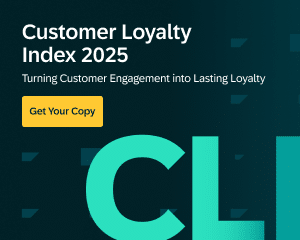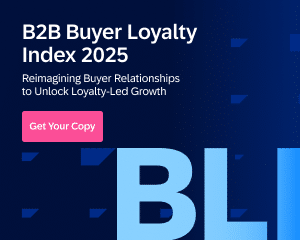As a marketing leader, you’ve likely heard the buzz around e-commerce marketing automation—but is it really worth the investment?
Leadership is asking you to deliver more growth with fewer resources. That means doing more with less, relying less on expensive third-party channels, and still meeting customer expectations for personalized, real-time experiences.
Meanwhile, those trusty set-it-and-forget-it automation tools? They’re no longer cutting it. Once-loyal customers are slipping away—and your team feels stuck.
The good news: Today’s AI-powered automation solutions can help you drive growth and retention, all without straining your budget. Even better? You can implement them in a way that keeps the human touch front and center.
E-Commerce Marketing Automation Isn’t Optional Anymore
The numbers tell a clear story—e-commerce is booming, and automation has quickly become table stakes.
According to Statista, global e-commerce sales hit a staggering $5.78 trillion in 2023 and are expected to surpass $8 trillion by 2027. That explosive growth has attracted more competition than ever. In fact, Research and Markets reports that the number of e-commerce sites tripled between 2019 and 2023—reaching over 26.5 million worldwide.
To keep up, marketing teams are turning to automation in record numbers. A recent Digital Commerce 360 survey found that 79% of marketers now use some form of automation to accelerate the customer journey and improve campaign performance.
But here’s the real question: are you actually using automation to its full potential?
According to Email Vendor Selection, many businesses still treat marketing automation as a set-it-and-forget-it tool—missing the opportunity to deliver connected, customer-first experiences that drive long-term loyalty and revenue.
What sets leading brands apart is how well they integrate real-time data and behavioral insights into their automation programs. When executed with care, marketing automation becomes far more than a cost-saving tactic—it becomes the engine of personalized customer experiences that deliver measurable business impact.
6 Ways to Make Your Automation Feel More Human
E-commerce grew another 8.4% in 2024, according to Shopify. Brands that stand out are using automation not just to save time, but to deepen relationships. Here’s how to keep the human element at the center of your strategy.
1. See AI as a partner, not a replacement
Strategy: Let AI amplify your team’s efforts by automating insights and surfacing patterns humans can build on creatively.
Think of AI as an ally that helps your marketers scale personalization. By using machine learning to analyze behavior, you can shift from one-size-fits-all messages to content that adapts to each customer’s interests in real time.
Instead of sending generic product recommendations, you can build dynamic content frameworks that reflect individual preferences and browsing habits.
And it pays off: SAP Emarsys research shows personalization increases average order value by 23% and customer lifetime value by 17%.
The key? Let AI do the heavy lifting on pattern recognition—but rely on your team to craft messages that resonate emotionally.
2. Use data to nurture the customer journey
Strategy: Break down data silos to gain a unified view of your customers and orchestrate relevant, cross-channel experiences.
By connecting your tech stack—from CRM to social ads to mobile—you unlock a full picture of your customer’s journey. And that means you can respond to behavior in real time, not just react days later.
For example: If someone browses a product category in your app, then abandons their session, you can follow up with a tailored email that picks up exactly where they left off. No context lost.
This kind of automation ensures every channel builds on the last—keeping your brand top of mind and relevant.
“We leverage the data we collect from advertising, email marketing, and social media ecosystems to crunch the data and set different profiles for customers, so that we are delivering personalized offers or messages to the segments they're really interested in.”
3. Make customers feel seen with omnichannel engagement
Strategy: Orchestrate communications across all touchpoints so customers feel like they’re part of one continuous conversation—not a series of disconnected campaigns.
Customers don’t think in channels—they think in experiences. Whether they’re messaging you on WhatsApp, browsing your app, or walking into your store, they expect the same level of recognition and personalization. You’ve probably heard this referred to as “omnichannel engagement.”
By syncing customer data and messaging across platforms, you can deliver context-aware prompts and offers that feel personal—not automated. That’s what omnichannel engagement really means.
“When someone reaches out to you in a conversation channel like Messenger or WhatsApp, they don't come to you for no reason. They come to ask you a question. That means they are interested in one thing: either something that they want to buy or something that they want to get an answer to.”
4. Turn marketing emails into relationship builders
Strategy: Use lifecycle automation to move beyond transactional emails and nurture long-term loyalty.
Email is still a powerful channel—when used with intention. Instead of defaulting to discounts or triggers, treat email automation as an opportunity to build trust.
Use welcome sequences to introduce your values. Build cart abandonment flows that reflect individual behaviors. Celebrate milestones and ask for feedback after purchases.
Done right, email becomes more than a revenue tool—it becomes a customer relationship engine.
“We target customers with our automated emails. For example, if you ever engaged with our spa offers advertisements, then we will send you promotion emails to try to convert you and also to make you re-engage with us on the website.”
5. Automate loyalty programs to keep buyers happy
Strategy: Evolve loyalty programs to reward behavior across the full customer journey—not just purchases.
Modern loyalty automation should track engagement, celebrate milestones, and use predictive analytics to intervene before a customer walks away.
Recognize anniversaries, upgrade tiers, and launch win-back campaigns based on real behavioral cues—like browsing frequency or declining order value.
The result? Customers feel seen, appreciated, and motivated to stay engaged.
6. Forecast with better accuracy using AI
Strategy: Use AI-powered forecasting to anticipate customer needs, tailor promotions, and avoid inventory gaps that hurt experience.
AI helps you predict demand, optimize stock, and even adjust pricing or offer levels based on customer sensitivity.
That means fewer stockouts, better-timed promotions, and marketing that feels serendipitous—as if you knew what the customer wanted before they did.
Once reserved for personal shoppers, this level of service is now available at scale, thanks to predictive automation.
2 Real Marketing Automation Success Stories
What does marketing automation look like when put into practice? Next up, let’s take a look at examples from leading brands who’ve mastered the art of automation.
Regal Hotels and Swire Hotels: Re-attracting guests with the help of first-party data
Both Regal Hotels International and Swire Hotels faced a familiar challenge: heavy reliance on third-party booking platforms left them without the customer data they needed to personalize.
“Our first priority is shifting our focus from finding customers through online travel agencies to our direct booking channels, which helps us gather sufficient customer data to offer personalized offers and get more chances to upsell and cross-sell our products.”
By adopting SAP Emarsys’ advanced automation solutions, both brands now use automation to send tailored offers based on preferences, past stays, and loyalty status—resulting in more direct bookings and deeper relationships.
Diageo and Wella Company: Integration of advanced automation
When global brands Diageo and Wella Company turned to SAP Emarsys, they weren’t trying to replace marketers—they wanted to supercharge them.
By automating repetitive workflows, their teams gained time to focus on what they do best: creative problem-solving.
Upholding EU Regulations on Data Privacy
Since the EU tightened its laws on data privacy, notably with the enforcement of GDPR in 2018, marketers must balance personalization with privacy. SAP Emarsys makes that easier.
Tools like AI Product Finder and AI Subject Line Generator let you personalize at scale—without overreliance on sensitive personal data.
In fact, 84% of marketers say automated subject lines lead to higher open rates—all while staying GDPR-compliant.
The Future of Automation? It's Human-Driven.
E-commerce marketing automation isn’t about replacing your team—it’s about amplifying them. As AI continues to evolve, the most effective strategies will be those that combine intelligent automation with human creativity.
From micro-fulfillment centers to predictive analytics, automation is redefining how brands engage, serve, and retain customers.
But what sets the best apart? A human-first mindset. Because the future of automation is personal.
Taking the Next Step to Automate Your Marketing
E-commerce marketing automation helps you scale smarter—not just faster. With the right tools, your team can turn every interaction into an opportunity for connection.
Ready to transform your customer relationships with SAP Emarsys? Request a demo and discover how our AI-powered platform helps marketers move faster, achieve more, and deliver human-first automation that drives real results.







